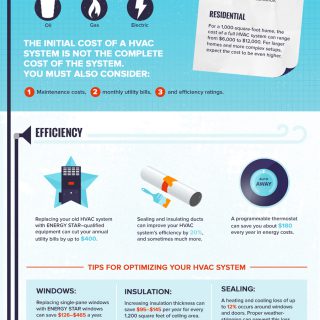Optimizing Comfort And Cost Savings - Tips For Optimizing Your Heatpump Performance
Optimizing Comfort And Cost Savings - Tips For Optimizing Your Heatpump Performance
Blog Article
Short Article Developed By-MacKay Townsend
Whether you own a heat pump or have an existing boiler back up, there are a couple of points that can be done to optimize your system for efficient operation. By complying with these ideas, you can make best use of convenience and financial savings without straining your system or racking up energy costs.
Readjusting your thermostat for efficiency is one of the very first steps. Making use of zoning capacities to restrict home heating of unoccupied spaces is an additional effective approach.
1. Establish Your Thermostat to the Right Temperature
As the seasons alter, stabilizing comfort and price efficiency can be an obstacle. Luckily, a couple of basic suggestions can help you reduce energy consumption and make the most of financial savings.
Beginning by establishing the most effective temperature for your family, then establish your thermostat appropriately. Prevent making large lift and down in the temperature level setting, as this will certainly create your heat pump to cycle on and off extra frequently, consuming more energy.
Instead, slowly reduced the temperature during the night for a much more comfy sleeping atmosphere. After that, raise it somewhat in the early morning. Remember to maintain air vents open and guided downward when home heating, and up when cooling to maximize circulation.
2. Examine Your Unit Routinely
A heatpump system requires minimal maintenance, yet it is very important to examine the system regularly to catch any kind of issues before they become serious. Clean interior filters on a routine established by the maker or when they're noticeably unclean, and make sure exterior systems contend least two feet of clearance to enable airflow.
Evaluating the unit will also consist of cleansing, tightening up electric terminals, and running efficiency tests to make sure accuracy during heating and cooling down modes. It's advised to have an expert service the heat pump two times a year. Doing see here can make the most of power cost savings and lengthen the life of the system.
3. Clear Snow and Ice Around the System
Heat pumps are created to operate outdoors and need to be without snow and ice in order to circulate air. If your heatpump is blocked by snow and can not attract air, it will certainly toggle between cooling and heating and may overwork.
It is very important to remove a two-foot clearance around your outdoor unit in order to enhance air flow and stop ice accumulation. Heatpump typically go into a defrost setting in the winter months to melt ice and snow yet this procedure can be bothersome if your unit is obstructed by excessive snow. This will lower your power effectiveness and result in costly repair expenses in the future.
4. Examine the Cooling Agent Levels
A heatpump makes use of cooling agent to cool your home in summer and cozy it in winter season. You can aid maximize its performance by regularly examining the refrigerant degrees.
It takes much more energy to change the temperature of your heat pump from a comfy setting to a cooler one than it does to preserve that temperature. Changing the temperature level for brief amount of times can additionally throw away power.
Leaking air ducts and unclean air filters can bring about unequal temperatures. They can also make your heat pump less effective and cost more to operate. A professional can find and repair these problems to boost your heatpump's efficiency.
5. Optimize Your Zoning Capabilities
Using the zoning capacities of a heat pump can aid to decrease power waste by heating up only occupied areas. This not only lowers power usage yet likewise lowers operating expense and prolongs the life of the system.
The Build Balanced Zones tool uses a genetic algorithm to develop zones that meet needed area structure standards. These criteria consist of equivalent location, compactness, and equal number of attributes.
Furthermore, by using clever thermostat technology to maximize the temperature level setups based on tenancy patterns and scheduling, you can better boost your heatpump's efficiency. Keeping a clean air filter, ensuring proper insulation and having your ductwork assessed for effectiveness can all add to boosted energy cost savings as well.
6. Shielding the Outdoor Device
Home owners frequently ask whether it's worthwhile to plant color trees near their outdoor air conditioning system (AIR CONDITIONING) system. The answer is normally indeed, as shielding the air conditioning unit can help reduce warmth from the sun, which in turn assists it cool down more effectively.
Nonetheless, it's important to keep in mind that shielding the air conditioning device doesn't necessarily cut energy intake. As clarified in Recommended Studying of the FSEC report, the temperature of the bordering air has a larger impact on cooling performance than does the volume of air drew in by the ac system.
If your a/c compressor gets on the south side of the house, consider growing high, deciduous trees with wide, spread-out canopies. These can give adequate shade within one year.